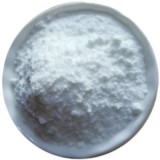 |
Gluconolactone or Glucono delta-lactone USP and Food Grade Supplier Exporter Manufacturers' Representative |
Email: info@ammol.org |
Call Toll Free +1-855-552-6665 |
Gluconolactone or Glucono delta-lactone
CAS Number: 90-80-2
Molecular Formula: C6H10O6
Molecular Weight: 178.14

Gluconolactone
or Glucono delta-lactone
Glucono delta-lactone, also known as gluconolactone, is a food additive with the E number E575 used as a sequestrant, an acidifier, or a curing, pickling, or leavening agent.
Gluconolactone USP Grade Specifications
C6H10O6 -- 78.14
D-Gluconic acid -lactone.
Glucono delta-lactone CAS 90-80-2
Gluconolactone contains not less than 99.0 percent and not more than 101.0 percent of C6H10O6.
Identification: Dissolve about 0.5 g in 5 mL of warm water in a test tube. Add 1 mL of freshly distilled phenylhydrazine, and heat on a steam bath for 30 minutes. Cool the solution, induce crystallization by scratching the inner surface of the test tube with a glass rod, and collect the crystals of the phenylhydrazide of gluconic acid. Dissolve the crystals in 10 mL of hot water to which a small amount of activated charcoal has been added, filter, recrystallize, wash the crystals with 2 mL of cold water, and dry the crystals at 105 for 1 hour: the crystals so obtained melt between 195C and 200C.
Lead: --- the limit is 0.001%.
Heavy metals: --- the limit is 0.002%.
Reducing substances: Transfer 10.0 g to a 400-mL beaker, add 40 mL of water, and swirl to dissolve. Add 2 drops of PhPh, and neutralize with sodium hydroxide solution (1 in 2). Dilute with water to about 50 mL, and add 50 mL of alkaline cupric tartrate. Heat so that the solution begins to boil in 4 minutes, and allow boiling to continue for 120 seconds. Pass the suspension through a medium-porosity filtering crucible, and wash the filter with three 5-mL portions of water. Place the crucible in an upright position in the original beaker, add 5 mL of water and 3 mL of nitric acid to the crucible, mix with a glass rod to ensure complete solution of the cuprous oxide, and wash the solution from the crucible into a beaker with the aid of 5 mL of water. Add bromine, usually 5 to 10 mL, until the solution becomes yellow in color, and dilute with water to about 75 mL. Add a few glass beads, boil until the bromine has been driven off, and cool. Slowly add ammonium hydroxide until a deep blue color appears, then adjust with glacial acetic acid to a pH of 4, and add water to make about 100 mL. Add 4 g of potassium iodide, and titrate with 0.1 N sodium thiosulfate, adding starch just before the endpoint is reached: not more than 16.1 mL of 0.1 N sodium thiosulfate is consumed.
Assay: Dissolve about 600 mg of Gluconolactone, accurately weighed, in 100 mL of water in a 300 mL conical flask, add 50.0 mL of 0.1 N sodium hydroxide, and allow to stand for 15 minutes. Add PhPh, and titrate the excess alkali with 0.1 N hydrochloric acid. Perform a blank determination. Each mL of 0.1 N sodium hydroxide is equivalent to 17.81 mg of C6H10O6.
Please visit SDS Safety Data Sheet of Gluconolactone or Glucono delta-lactone Suppliers.
American Molecules, also known as ammol.org is a distributor, supplier and manufacturers' representative of all types of Pharmaceuticals, Functional Ingredients, Excipients and Specialty Chemicals in Texas USA. Our principals manufacture supply and export USP NF BP, Ph Eur, etc grades of chemicals pure and reagent grade, mineral fortifiers, FCC food grade. Tailor made particle size and customized specifications are offered. The principal's facility is having one or more of the certifications like FDA approval and GLP, cGMP, ISO9001, ISO14001, ISO/IEC 17025, ISO22000, FSSC 22000, ISO45001, FSSAI, Kosher, HALAL, COPP, WHO-GMP certified and Written Confirmation (WC) for export to Europe is available. The manufacturers suppliers and exporters observe WHO Good Manufacturing Practices and Good Laboratory Practices.





Suppliers and Manufacturers' Representative:

9910 Bent Oak Dr
Houston, TX 77040, USA
Call Toll Free: 1-855-55-AMMOL 1-855-552-6665
Email: info@ammol.org